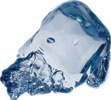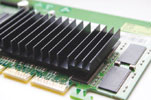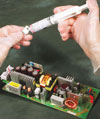

Most electronic components are low-power and produce negligible amounts of heat in their operation. Some devices, however – such as power transistors, CPUs and power diodes – produce a significant amount of heat and measures may be necessary to take account of this in order to prolong their working life and increase reliability.
If a heat-producing electronic component is considered in isolation then, during operation its temperature will rise until the heat produced within the device becomes equal to the heat lost to the surroundings and the device has reached equilibrium. The rate of loss of heat from a hot object is governed approximately by Newton’s law of cooling, which states that the rate of loss of heat is proportional to the temperature difference between the body and the surroundings.
As the temperature of the component rises, the heat loss increases – when the heat loss per second equates to the heat produced per second within the component, the device will have achieved its equilibrium temperature. This temperature may be high enough to significantly shorten the life of the component or even cause the device to fail. It is in such cases that thermal management measures need to be taken. The same considerations can be applied to a complete circuit or device which incorporates heat-producing individual components.
The rate of loss of heat will be higher in a forced draught than still air, so one way of controlling the temperature of a device or circuit is to incorporate a fan or fans to increase the air flow. Even ensuring adequate general ventilation will result in a lower operating temperature than if the circuit is in a confined space with no ventilation slots. One point which can be overlooked is that reduced atmospheric density at high altitudes leads to less effective heat transfer to the surroundings and consequently higher device operating temperatures.
Heat is lost from a component to its surroundings at the surface of the component. The rate of loss of heat will increase with the surface area of the component – a small device producing 10 Watts will reach a higher temperature than a similar powered device with a larger surface area. One way of limiting the operating temperature will therefore be to artificially increase the surface area. This is done by attaching a metal heatsink to the device.
Heatsinks can be made by stamping, extrusion or casting and are generally fabricated from copper or aluminium or their alloys – the heatsink needs to be a good conductor of heat. Often, heatsinks have a finned structure to maximise the available area for heat dissipation to the surroundings. Where heatsinks are being used, they will be more effective if the whole unit is well ventilated or, even better, forced air flow is applied by the use of one or more fans.

It is impossible to make heatsinks or components with perfectly flat mating surfaces, so, when the two come into contact, the high spots contact one another and there will be a small air gap between the two over a large part of the surface. Air is a poor conductor of heat and so the interface will provide a thermal barrier which limits the efficiency of heat loss from the device. It is to overcome this effect that heat transfer compounds are used.
Heat transfer compounds are designed to fill the gap between the device and the heatsink and thus reduce the thermal resistance at the boundary between the two. This leads to faster heat loss to the heatsink and a lower operating temperature for the device. Heat transfer compounds can be of various types. Electrolube produces a range of thermally conductive pastes which can be applied to displace air from the component/heatsink interface. These consist of thermally conductive mineral fillers in a carrier fluid – the fluid may be non-silicone or silicone based.
Silicone-based pastes, such as Electrolube’s HTS and HTSP, generally have higher operating temperatures than their non-silicone alternatives, HTC and HTCP. Silicones can cause a problem with some circuitry as silicones migrate very readily and can cause contamination, eg on relay contacts. It is possible to modify the thermal conductivity of thermally conductive pastes by increasing the mineral filler content, or changing the types of filler used. The ‘P’ versions of the above pastes have a higher filler loading and contain a special blend of different fillers to maximise thermal conductivity. Generally, the higher thermally conductive pastes are higher in viscosity and this can lead to greater difficulty in dispensing.
Thermally conductive pastes remain as a paste and this makes for easier disassembling of components for recovery or repair. It may be desirable in some circumstances to use a thermal transfer material which cures up to a solid. Electrolube’s TCR is a silicone RTV filled with a proprietary blend of mineral fillers; when applied between the heatsink and the device it cures to a rubber under the influence of atmospheric moisture. Electrolube’s TBS is a two component epoxy resin which cures to a tough solid and bonds the heatsink to the component. This may be an advantage with some designs of device, but will lead to problems with disassembling.
With any thermally conductive material it is very important to ensure that the interface between device and heatsink is completely filled and all air is displaced. This is usually done by applying a quantity of the compound to the centre of the mating surface of the device or the heatsink, and bringing the two together whilst holding them so that the mating surfaces are parallel. It is advisable to control the quantity of the material applied, so that enough is present to ensure that all air is displaced but not so much that a rather messy surplus appears at the edge of the interface. This objective is more readily achieved using automatic dispensing and assembly equipment. Ensuring all air is excluded from the interface leads to a lower thermal resistance and lower device operating temperature. The higher the thermally conductivity of the paste or resin the lower will be the thermal resistance, and hence the lower the operating temperature.

The thermally conductive heat transfer compound will have a lower thermal conductivity than the heatsink material, so keeping the thickness of the film at the interface as low as possible will decrease the thermal resistance and again lower the operating temperature. It is important, however, to ensure that the lower film thickness does not result in air gaps in the film. It is possible to carefully control the thickness of the film by including very small solid glass spheres (ballotini) of controlled diameter into the paste or resin – the gap thickness will then be determined by the diameter of these. It is advisable to ensure good contact between the device and the heatsink by the use of bolts or clips.
It is possible, knowing the thermal conductivity of the heat transfer compound, the thickness of the film of heatsink compound and the contact area of the heatsink, to calculate the thermal resistance across the boundary and hence the equilibrium operating temperature of the device. The power of the device needs to be known and assumptions need to be made about the temperature reached by the heatsink.
With heat-generating circuitry, it may be adequate to ensure thermal control by potting into a metal box, with or without integral or attached cooling fins, using a thermally conductive potting compound. Electrolube produces several such materials, the most popular being the two part epoxy resins ER 2074 and ER 2183. Once again it is important to ensure that no air inclusions occur during the potting operation, as these will interfere with heat transfer to the metal case.
If the very high thermal conductivity of the two mentioned resins is not required, it may be adequate to use a general purpose filled potting compound such as ER 2188. Mineral fillers have a higher thermal conductivity than the resin base, so filled resins are better than unfilled resins as far as thermal control is concerned. The higher the filler level, the higher will be the thermal conductivity – higher filler levels will lead to higher viscosity, however, and a greater possibility of air inclusions in the potting.
Other very specialist methods of thermal control are the use of liquid cooling and also Peltier effect devices. Normal liquid cooling involves the circulation of a coolant fluid in close proximity to the device – liquids are more effective for heat transfer than air. A refinement of liquid cooling is the use of heat pipes. With heat pipes a coolant fluid is vaporised at the hot component and the vapour then flows to a cold area where it is condensed. The latent heat of evaporation of the fluid gives very effective component cooling. This principle is used very effectively in refrigerators.
The Peltier effect is observed when a direct current is passed through the junction of two dissimilar metals – if current flows in one direction the junction heats up, but with flow in the reverse direction it cools down. Semiconductors have now been found which show this effect and an array of these can be used for cooling. All of these cooling devices will require the use of thermally conductive materials at the interface with the component being cooled, to exclude thermally insulating air and increase the efficiency of heat transfer to the cooling system. Also the hot end of the cooling device may involve the use of heatsinks to dissipate the heat.
For more information contact Edwin Brown, Vepac Electronics, +27 (0)11 453 1910.
| Tel: | +27 11 454 8053 |
| Email: | [email protected] |
| www: | www.vepac.co.za |
| Articles: | More information and articles about Vepac Electronics |

© Technews Publishing (Pty) Ltd | All Rights Reserved